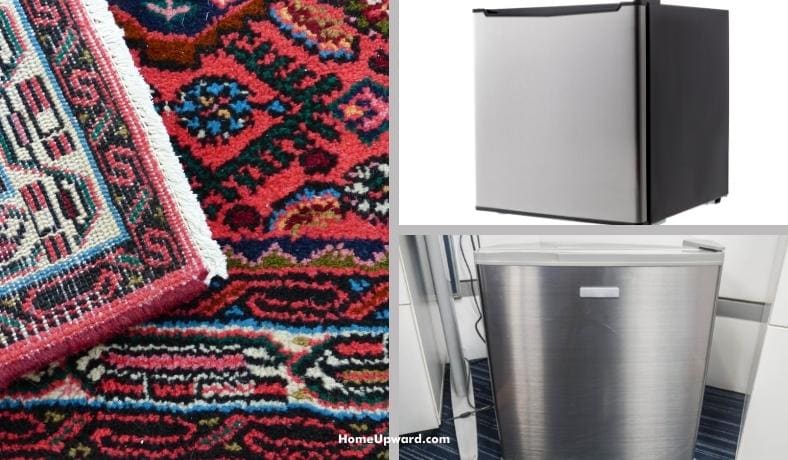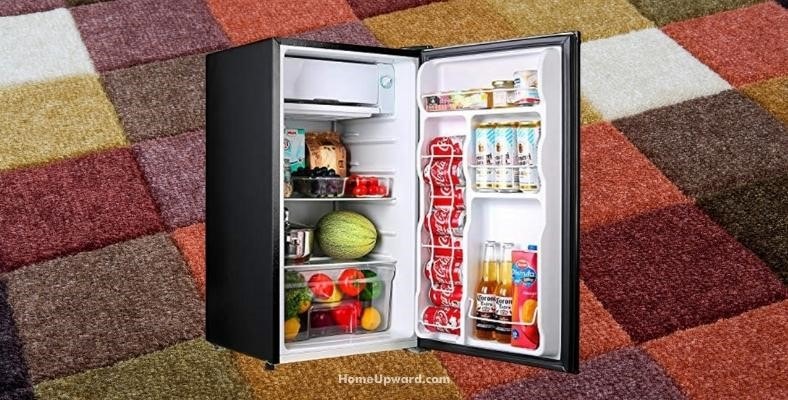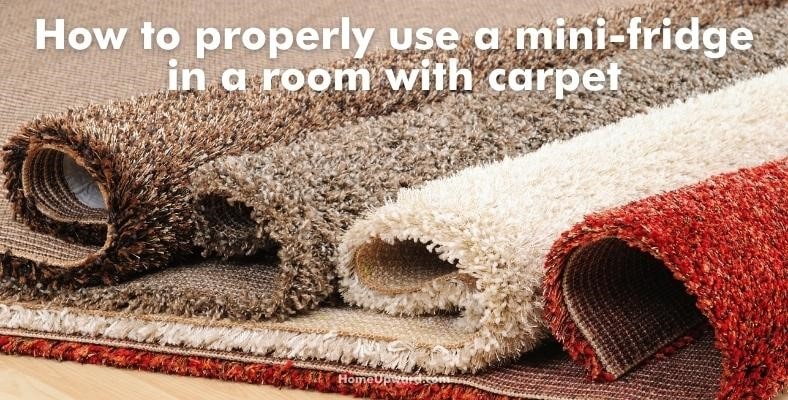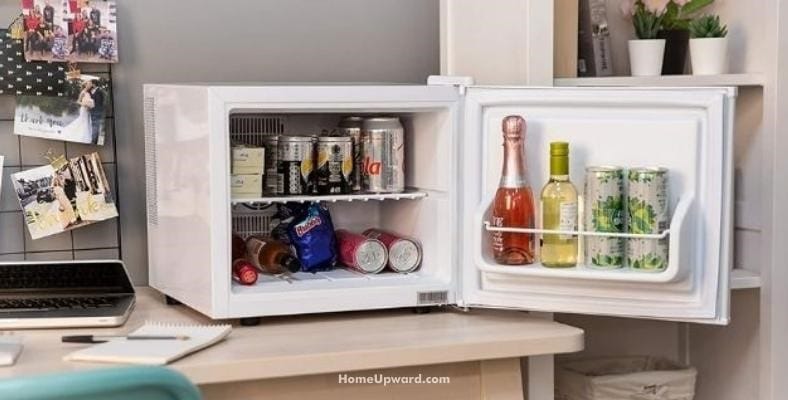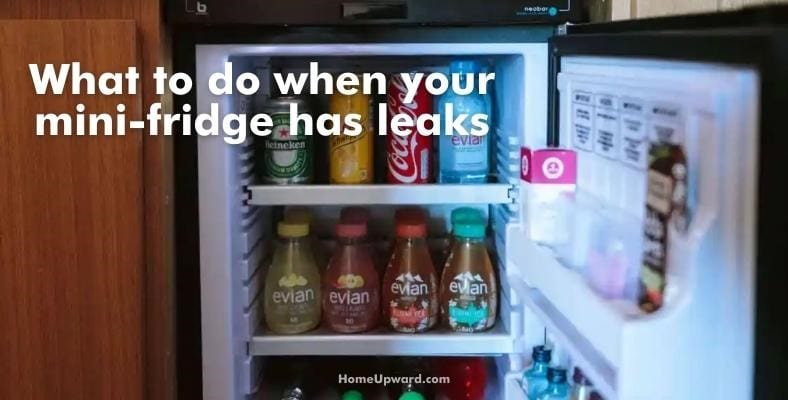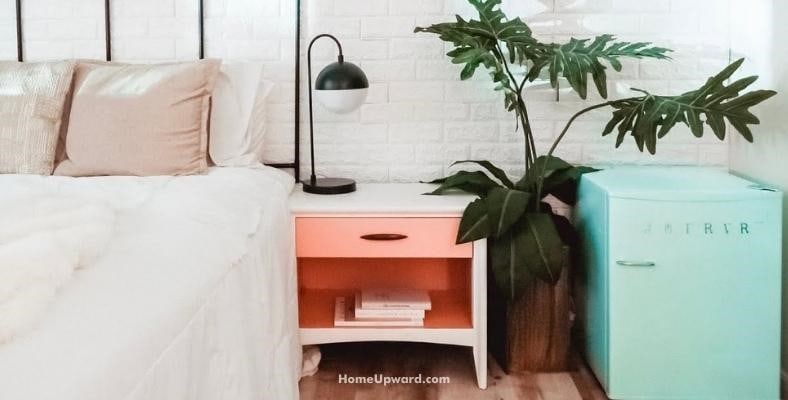Contents
Can You Put a Mini-Fridge on Carpet?
Mini refrigerators are a convenient amenity for so many situations. Whether you’re looking for a mini-fridge to complete your man cave or to help keep you fueled for long nights in a dorm room, it may feel necessary to place your mini-fridge on carpet.
The simple answer to the question of “Can you put a mini-fridge on carpet?” is yes. However, there are additional considerations if you decide to place these compact refrigerators on a carpeted floor.
It’s not recommended to place a mini-fridge on carpet because it can lead to many situations that are inconvenient, messy, and inefficient for the appliance.
Why isn’t it a great idea?
Refrigerators need free airflow to work efficiently. Carpeted floors retain heat and can prevent proper cooling from taking place within the refrigerator. Carpet can also be a barrier to promoting proper airflow throughout the mini-fridge.
Carpeting is a barrier to an efficient refrigerator because it forces your fridge to work harder to do its essential function: cooling. This means a mini-fridge on a carpeted floor may wear out more quickly.
If a mini-fridge encounters a problem, it will often shut off and start to defrost. Similarly, spills from a refrigerator are common, and a bigger headache when a fridge is on carpeting. This means a compact refrigerator on carpet may experience leaks on the carpet and flooring below.
Properly cleaning up mini-fridge leaks on carpet is not easy, but very important, so mold or mildew does not grow and compromise indoor air quality. If a leak is left for too long, the collected water will eventually damage the carpet and flooring under the mini-fridge.
How to Properly Use a Mini-Fridge in a Room with Carpet
What Can You Put on the Carpet Under the Mini-Fridge?
If you do decide to place your mini-fridge on carpet, it’s a good idea to put something down on the carpet first. This will act as a buffer between the bottom of the refrigerator and the carpet.
A buffer will help protect your carpet from leaks and other damage and will help your compact refrigerator operate more efficiently. You can choose a piece of plywood or a rubber mat to act as your buffer, but avoid choosing material that will conduct heat, like metal, or absorb liquid.
While using a buffer will help, it is still recommended to regularly check on the plywood, rubber mat, or other material to make sure no water is collecting, there are no leaks to the carpet below, and no mold is growing under the refrigerator.
Choose a Refrigerator with Coils on the Back
If you decide to place your compact refrigerator on carpet, make sure the mini-fridge has coils on the back of the appliance. Some mini-fridges come with coils on the bottom of the unit which is what you want to avoid.
The coils on a refrigerator store compressed air that is cycled throughout the refrigerator. This is how the appliance maintains a consistent temperature. If the coils aren’t working at their best the cooling process will be delayed or interrupted, resulting in a poorly working mini-fridge.
Bottom coil model problems
A refrigerator with condenser coils on the bottom relies on excellent airflow underneath the mini-fridge, or the appliance will struggle to maintain its temperature. Carpeting can complicate this process.
This can result in a fridge that wears out more quickly or is more prone to malfunctions. The food stored inside may be unsafe or spoil faster.
A refrigerator with coils on the back is standard on a full-size refrigerator, but take a second look at your mini-fridge to make sure. Condenser coils located on the back have a much easier time operating because of the unrestricted airflow.
Regularly Check Your Mini-Fridge
It is recommended to completely defrost and clean your mini-fridge once every four months, or about three times each year. Think about maintaining your mini-refrigerator every time the seasons change to stay on top of proper compact refrigerator maintenance.
In addition to defrosting your mini-fridge to avoid ice buildup and inefficient operations, wipe out the fridge completely and check for leaks on the appliance. Before returning your mini-fridge to its spot on your carpeting, examine the buffer material you are using and replace as necessary.
Check Your Mini-Fridge for Leaks Before Using It on Carpet
Before installing your mini-fridge on a carpeted floor, check it carefully for leaks. Leaks are a common and serious issue for a refrigerator and are even more damaging if the compact refrigerator is placed on carpeting.
Simply plug your mini-fridge in and guide your hand around all the sides of your mini-fridge. If you feel any air blowing on your hand, your mini refrigerator has a leak. Once you discover a leak, avoid putting this appliance on carpet — even if you have a buffer material.
What to Do When Your Mini-Fridge Has Leaks
Remove It from the Floor
As we discussed above, leaks are a common issue for refrigerators and must be taken seriously. The first step when you find your mini-fridge has a leak is to remove it from its place on your floor.
Carefully unplug the appliance first and avoid the leak when moving the appliance.
Drying Wet Carpet
Carpet that has absorbed a leak will not be able to dry out on its own and will most likely need help to fully dry out. A wet/dry vacuum will quickly and completely suck up all the liquid in your carpet.
If you don’t own one, you can often affordably rent one from a local hardware store.
Do Refrigerators Produce Harmful Gas If Kept in a Bedroom?
The good news is that there’s no evidence to suggest that a refrigerator will produce toxic gases that will harm someone sharing a room with a mini-fridge. While a refrigerator does contain gases that are essential for cooling, the amount is too small to harm a human.

